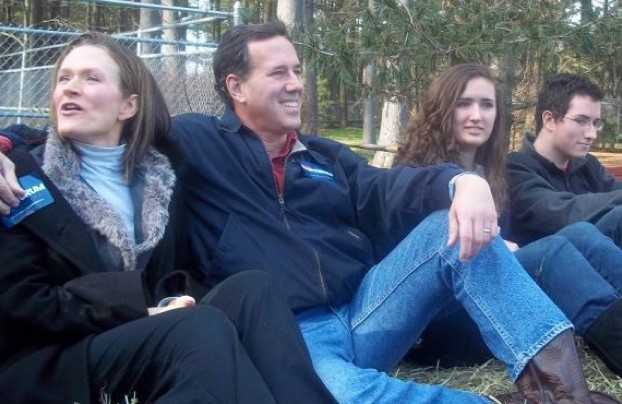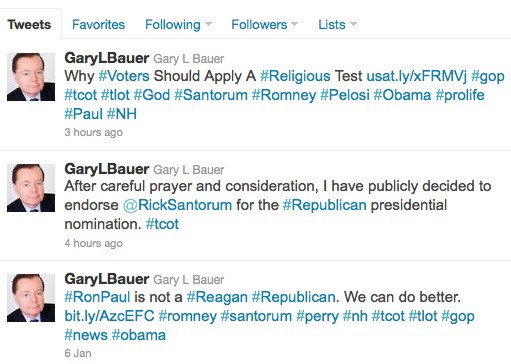Gochujang: Korean Go-to, All-In-One Magic Chile Sauce
by Ben Choi

Our relationships with condiments can become rote: ketchup/fries, mustard/hotdog, salsa/chips — even sriracha/pho. We robotically dip, drizzle and douse without a conscious thought. In this column, we’ll be trying to shake up our collective condiment consciousness. Proust wrote, “The only real voyage of discovery consists in not seeking new landscapes but in having new eyes,” and with that in mind, I thought I’d take you along in search of lost time — to my first condiment: Gochujang.
As a Korean kid growing up in American Samoa, I was part of a subculture made up of the families of Korean fishermen and sailors that had sprung up around the tuna industry of the South Pacific. (I know, there’s a musical in here, somewhere.) The heart of this community was Korea House, a blue-shingled, cantilever-roofed building, behind which were buried about a dozen earthenware vessels the size of Greek amphorae — it was in these we aged our gochujang.
Gochujang is a fermented paste made of red chili powder, glutinous rice powder, pureed soy beans and salt, seasonings like garlic and onion, all sweetened with a little sugar syrup and aged for, like, eons in buried earthen vessels. It’s about the consistency of hoisin sauce; perfectly uniform but slightly grainy. It brings to the table the perfect savory mix of flavors: spicy, salty and sweet, with an earthy finish and loads of umami. You may know it as the main finishing condiment for bibimbap, but it’s truly versatile, good for anything that involves rice or noodles, stir-fries and any soups or stews that could use a peppery, reddish cast. Oh, and it’s a main ingredient in spicy BBQ marinades, especially with pork.
One of the coolest and most flexible uses of gochujang is as a mother-condiment, the basis for other sauces and pastes. It can be mixed with doenjang (Korean red miso) to form ssamjang, which is great for lettuce wraps (ssam) and dipping vegetables, both raw and lightly blanched. But perhaps the best kick-around variation is chogochujang, which goes excellently with fish, sauteed and blanched greens, and can pretty much be used as Korean ketchup. Keep chogochujang in your fridge in a squeeze bottle; it will definitely come in handy for omelets, fried rice, etc. Use it as a marinade for burgers. You can even mix in a little extra oil and use it as a salad dressing! Don’t sweat orthodoxy with this condiment. (Interestingly, the peppers that go into gochujang were originally brought from America as part of the Columbian Exchange.)



Condiments have a way of serving as passports between traditional cuisines. In American Samoa, gochujang served as a go-between for Asian, Polynesian and American taste stylings. I can remember enjoying gochujang and chogochujang with kalua pig, breadfruit, kimchi and spam or canned corned beef on a taro leaf for a Sunday afternoon meal.
Later, when my family moved to L.A., and my parents were busy running a corner store, gochujang became a staple of the latchkey lifestyle for me and my brothers. Breakfast might be bokumbap, kimchi fried rice with Spam, tinged red with a healthy dose of gochujang and topped with an over-easy egg. For snacks we would make little maki rolls out of rice, canned tuna dressed with chokochujang and pickles. In a pinch, you can even make a meal of beef jerky or Slim Jims — remember, we were growing up in a convenience store — as long as you have some rice, some kind of vegetable and gochujang for dipping.
This wasn’t quite as terrible for us as it sounds — gochujang is actually quite healthy. Fermented foods have long been singled out as the reason for Koreans’ superior digestive and immune system health. A few years ago, the Korean health minister claimed his country’s penchant for fermented food was the reason there were no human SARS infections in South Korea. I agree totally, but have to point out that my people also go all in on rhino horn, Reverend Moon and goblins that have the power to transfer tumors from and onto the living.
Aside from helping to ward off the undead tumor-demons, gochujang has many uses, and it’s the off-label ones that make a great condiment, so be experimental. Look for it in Asian markets and expect to pay between 4 and 8 dollars for a 500-gram container in-store, a few dollars more online. There is a confusingly wide variety of brands out there with inconsistent translation on the labels, but I think you’ll find that relative price is a good indicator of quality in this case. It’s also thought that Sunchang County produces the best gochujang, and you can generally find it called out in English on the package. So enjoy! Oh, and after cooking, don’t rub your eyes.
Related: A Tale Of Two Chilis
Ben Choi carefully curates a cabinet-cramming collection of condiments from his kitchen overlooking the San Francisco Bay.
"Sh*t Gay Guys Say to Their Cats"
If you missed the “Shit X Says To Y” semi-meme, it’s fine, it’s all over now, for real.
The Cathovangelical: Rick Santorum's Quest for a National Abortion Showdown
by Abe Sauer

It’s a fine how-do-you-do. Fifty years after Democrats struggled to prove that their candidate for President “just happened to be a Catholic,” now they face the prospect of painting a Republican challenger as a dangerous follower of Rome’s socially extreme dogma.
The ascension of former Pennsylvania Senator Rick Santorum to maybe-viable contender for his party’s nomination and even a Pennsylvania Avenue address promises a number of rather unique possibilities. (Get ready for the “surprise” when he takes North Carolina.)
Most immediately, and a source of far more spiritual indigestion, a Santorum nomination would mean the most bloody dust-up over abortion and faith modern America has ever experienced. That’s exactly what a lot of people want — Santorum included.
In what almost seems like an impossible fact, the office of President has been held by twice as many Quakers as Catholics. [Thanks to the commenter for pointing that out!] Santorum would be only the second ever.
According to The Pew Forum on Religion, 31% of living Americans were raised Catholic but only 24% currently self-identify as Team Pope — and that’s with a boost from largely Catholic Hispanic immigration. Sensing a dwindling reserve of souls, Rome has launched a new $4-million “Catholics Come Home” campaign, with the goal of reactivating one million of the former faithful. And while 24% is not a voting base to sneeze at, Santorum is a new hybrid: a Cathovangelical.
Maybe because, to them, all far-right Christians look alike, much of the media often lumps Rick Santorum in with evangelical politicians. In some cases, Santorum is identified as “evangelical.” Even The New York Times is not immune.
Another reason for the confusion might be the way evangelicals have lined up behind Santorum. His Iowa surprise has justifiably been credited to the “retail politics” of gumption and Alfani shoe rubber. But also in Iowa, where evangelical leaders commonly appear in the press identified by the term “kingmaker,” Rick secured the pubic endorsement of Family Leader head Bob Vander Plaats, the kingmaker of Iowa kingmakers.
This misidentification also happens because of his outspoken positions on “family values.” Santorum’s extreme positions on abortion, gay marriage and even contraception — a key “Catholic” giveaway — knit him in well with the ultimate social goals of many top evangelical activists. Some evangelicals even claim to see through Santorum’s “ruse.” After the Iowa caucus, David Brody, the chief political correspondent for Pat Robertson’s Christian Broadcasting Network, wrote that Santorum “may technically not call himself an evangelical but he is definitely one when it comes to social issues. So don’t get too caught up in the title of ‘Roman Catholic.’ Santorum is an evangelical at heart.” Santorum, outed.
All this confusion is not on account of Santorum, who regularly states his denomination. In a 2007 Philadelphia Inquirer op-ed from his column cleverly titled “The Elephant in the Room,” Santorum began “How did my own Roman Catholicism shape my work as a senator?” On the way to an answer, he calls J.F.K. a “cop out.” (This is a guy who once told the National Catholic Reporter that Kennedy’s dismissal of his Catholicism did “great harm in America.”)
The real elephant in any room that Santorum happens to inhabit is abortion.
Most politicians, even pro-life ones, like to speak about abortion as little as possible. Put a pro-choice/pro-life position statement on the website and move on. There is simply no truck in it. There is no wiggle room. It’s dead on the stump. Few voters are on the fence about it. It cannot be spun. Say even the slightest wrong thing, your ass is grass. Why bother?
But Santorum? Santorum loves abortion.
* * *
According to an analysis by the Sunlight Foundation, in his 11-year span in Congress from January 1996 to January 3, 2007, Santorum “spoke the following words more than anybody else in the Senate: abortion, partial-birth, fetus, fetal, womb. He also uttered the following phrases more than anyone else: ‘base of the skull,’ and ‘life of the mother.’”
During his tenure, Santorum alone accounted for over 12% of all mentions of the term “abortion” and over 18 percent of all utterances of “fetus.”
In a general election against Obama, Santorum will no doubt go after the abortion subject, from the ramifications of “activist judges” to the limitations of science. Santorum has already started. In a January, 2011, interview with CNS News, Santorum criticized Obama for his opinion that a fetus is not a person under the Constitution. Santorum, blankly, said he found it “almost remarkable for a black man to say, ‘No, we are going to decide who are people, and who are not.’”
Santorum’s remarks were immediately criticized as racist by liberals, an outrage that was immediately criticized as despicable political correctness by conservatives, who see fetal life as the civil rights issue of the age. While it may seem anathema to political and media observers, a race-abortion showdown would be welcome by hard-right conservatives.
Once the litigious fringe, the Personhood Movement is now gaining nationwide recognition, if not victories. (Up next, Wisconsin.) While many pro-life candidates find the idea of personhood both a political bridge too far as well as a knotted mess of unintended consequences, they are forced to play host to the hardcore anti-abortion activists whose endorsements they depend on. For all its bravado and snarl, the Tea Party’s power still runs a far second to the pro-life movement, in part because it often overlaps. (It’s a misconception that the tactic of “primary-ing” an incumbent in one’s own party was invented by the Tea Party.)
Even America’s most popular entertainment is signaling to Santorum that the time is ripe for his cause. In just the last two months, two of the biggest box office hits with teen and younger audiences were Twilight: Breaking Dawn and The Devil Inside. Both had plots heavy on abortion. Americans seem like they’re chomping at the bit to answer the deep philosophical question opened by the court ruling of the former generation: When is life?
Slowly, on Facebook and on the backroads of conservative web pages and radio shows nobody talks much about, a detail is creeping into the running “socialist” criticism of Obama: The president has been to church only nine times since taking office. Add that to the fact that a Pew poll found 43% of American adults don’t know Obama’s religion and this is a battle Obama should take seriously. It’s certainly one where he is vulnerable — though only to Santorum.
* * *
Nothing will fuel a pro-life confrontation, and Santorum’s popularity, more than liberals continuing to ridicule Santorum for how the family dealt with a son that died two hours after premature birth in the 1990s. Santorum has publicly described how the family took the dead Gabriel home, slept with him, and had their other children “meet” him. Throbbingly useless person Alan Colmes mocked Santorum for “playing” with the dead child. He later apologized. The Washington Post’s Eugene Robinson went on Maddow and called the behavior “weird.” The blowback was immediate, intense and, more importantly, it even came from New England moderates.
Anyone who speaks with a number of obstetricians or neonatal nurses (such as Karen Santorum) will find the family’s was far from uncommon behavior. Presented with the anecdote, birth center professionals soberly asked what the big deal was. (And with just such a tragic event within my own close family, I can say from personal experience that further “criticism” of Santorum on this subject will only create sympathy, as well as giving him the window he and so many of his supporters want to talk about their favorite issue.) On Fox’s Hannity the night before the New Hampshire primary, Santorum brought up the criticism, and, like a machine, used it to plow into questions about the pro-life credentials of other candidates.
The follow-up effort that everyone can expect to see soon? That before meeting Rick, Karen Santorum cohabited with the OB-GYN founder of Pittsburgh’s first abortion clinic. It’s a bear trap the Santorum campaign is begging the media to step in.
* * *
The most under-cited piece of journalism informing the 2012 election is Warren Cole Smith’s April 5, 2008 “Divided We Stand” in the Christian publication World. In it, Smith chronicles “how several dozen leaders of the ‘Christian right’” came together in New Orleans to discuss “missteps in the [2008] GOP presidential campaign.”
There, Paul Weyrich (a founder of Moral Majority, Heritage Foundation and Council for National Policy), stood and admitted his gross fault in backing Romney simply on the issue of electability. The Christian right eventually fractured over supporting McCain over Huckabee. Meanwhile, the synod found Romney’s repeated pleas for their support more useless than a box of Trojans and Mitt gained “only a footstool at the Christian conservative table, whose leadership increasingly was troubled over his flip-flops on gay civil unions and abortion.”
When Mike Huckabee achieved mixed success courting evangelical power brokers in 2008, his pitch was, “The other candidates come to you. I come from you.” The plea moved some, but as Smith described, others were distracted with the notion of electability.
When Vander Plaats endorsed Santorum in Iowa, he said the exact same thing: “Rick Santorum comes from us — not just to us, from us.”
In South Carolina, Santorum just wrapped up the endorsement of hashtag-happy Gary Bauer, an evangelical former Reagan administration official, president of the Family Research Council and a senior VP of Focus on the Family, who now heads up the organization American Values and also serves the board of the Emergency Committee for Israel. He’s important. After endorsing McCain in 2008, Bauer had declined to back anyone this cycle, but then noted that “it has become obvious that conservative voters are deeply divided about who should carry the banner for our values into the 2012 election.”

In the coming months, when pro-Santorum forces use the term “values,” they are not just talking about conservative pro-life/”pro-family” values versus liberal ones. They are talking about Romney and Mormonism. In his 2007 Chronicle piece, Santorum painted what might be a dire prophecy for a Romney-Santorum showdown in 2012: “Romney is a Mormon because he accepts the beliefs of the Mormon faith. This permits us, therefore, to make inferences about his judgment and character, good or bad.” Indeed, an hour after tweeting his endorsement for Santorum, Gary Bauer sent a link to his new USA Today column. Titled “Why voters should apply a religious test,” the piece is an astoundingly naked indictment of Romney’s Mormonism, going so far as top basically compare it to being Wiccan: “After all, Wicca involves magic, spell-casting and sorcery — not exactly mainstream religious practices.”
Mitt Romney is still the presumptive and even presumptuous Republican nominee, mainly because of this “electability.” But what if Republicans, despite the “anyone but Obama” mantra, don’t want to elect anyone as much as they want to force a showdown between Obama and a candidate as starkly different as possible? The running line is that conservatives are struggling with whether to compromise or to position for the best chance at winning an election, to have a candidate as much like Obama as possible to woo independents. But that storyline is four years too old. Conservatives already feel as if they compromised, to disastrous results, in 2008. The 2012 election is a do-over for conservative Christian leaders and voters.
Given how the Tea Party — which is now inseparable from the Christian right — has behaved so far, it’s plumb stupid to think it wouldn’t relish the chance to go down swinging with a principled candidate, bloodying everyone in the process.
Abe Sauer is the author of the book How to be: North Dakota and bets Rick Santorum will be Romney’s VP. He is on Twitter. Email him at abesauer @ gmail.com. Photo from Santorum 2012’s Facebook.
More Drunk People Answering Their Cellphones
Binge drinking — or, as some of us refer to it, “drinking” — is getting popular: “About 17 percent of U.S. adults, or 38 million people, say they binge drink, according to a new report from the Centers for Disease Control and Prevention. Binge drinkers reported an average of four episodes a month, each consisting of eight drinks at most, according to the report, which is based on data gathered during a 2010 survey. The biggest group of binge drinkers are young adults, with about 28 percent of people between ages 18 and 24 reporting binge drinking. Men are twice as likely as women to say they binge drink…. A 2009 survey showed that about 15 percent of U.S. adults binge drink. The apparent uptick in prevalence is likely due to the polling of more people with cellphones in the current report, the researchers said.”
Avoid The Gym, It's Bad For Your Drinking
Further reasons to not work out: “A lean, muscular person will be less affected by drink than someone with more body fat: Water-rich muscle tissues absorb alcohol effectively, preventing it from reaching the brain.”
Yes, There Should Be Fire
https://www.youtube.com/watch?v=gAIQWzW1MIc
You know the existential dilemma that occurs when you can’t decide which would be worse, if something were fake or if it were actually real? There oughta be a German word for that. Also, some kind of cleansing Internet conflagration. [Via]
The "Goodfellas" Show
“Goodfellas,” the TV series? I guess you can never judge in advance, but I am trying to think of how many Certifiable Classic Films have become worthwhile episodic pieces up to now and I am having a hard time with it. (And don’t tell me “M*A*S*H,” because no.) [Via]
The Rise Of The Blind Gossip Item
by Carrie-May Siggins

Scroll through the blog Crazy Days and Nights (CDAN) and you’ll find a number of innocuous items — red carpet photos of waving actors, well-worn bits of celebrity news. It seems as if the blog is made up of information you can find repeated elsewhere ad infinitum until you come across the nuggets of gossip gold: the blind items.
The anonymous blogger behind CDAN claims to be an in-the-know entertainment lawyer living in Beverly Hills — he signs his emails “Enty.” He posts first- and second-hand gossip about celebs while withholding their names and any obvious detail that might identify them. Because they are anonymous, the stories are often more salacious and drug-fueled than what you’d find in US Magazine, and as a result are extremely popular. Although Enty would later tell me, in an emailed interview, that he doesn’t keep track of the number of hits he gets, his blog is a clear beneficiary of the booming celebrity news industry. Enty claims not to make much money off his blog’s Google ads. But if public attention is a currency, Enty is getting very rich indeed. Among celebrity newshounds, he’s become a celebrity himself.
Fueled by sites like TMZ and Radar, the celebrity news industry, The New York Times reports, generates more than $3 billion a year, and a sizeable portion of that is derived from online traffic — TMZ alone attracts 8.7 million visits a month, according to Compete.com. Within this market, the most valuable commodity is exclusivity — publications will pay big bucks for first-hand information. As noted in that same Times piece, Dawn Holland, the woman who worked at the seemingly unbreachable Betty Ford Center, was paid ten thousand dollars for Lindsay Lohan’s files by both Radar and TMZ through a secret account set up by her lawyer. In 2007, TMZ purchased stolen photos from the main production office of the Steven Spielberg movie Indiana Jones and the Kingdom of the Crystal Skull. Ultimately, they decided against publishing them, reportedly after receiving a call from a Paramount attorney. But the transaction signaled to many in the media community the kind of game TMZ was going to play.
Often, celebrities set up the tents at their own circus. Many work hand in hand with the media outlets covering them to raise their public profile. As epitomized by Kim Kardashian’s highly profitable wedding, celebrity publicists may brainstorm with editors to fabricate the controversies or relationship developments that will bring the most attention to their clients.
Blind items are the black market of this gossip economy: they operate on the fringe of mainstream celebrity news. They are unverified, unpaid and are often the jotted-down whisperings of people who work closely with the celebs. The seeming authenticity of the gossip comes from its sources’ proximity to the film industry. As CDAN’s Enty told me, he never has to pay for information, and he gets much of it from other insiders in Hollywood.
Blind gossip is becoming so popular that many older gossip mags, like the National Enquirer are adding them to their sites. And “[s]ites that do depend on traffic for business have added blind items to their sites,” said. Enty.
After five years of writing his blog, Enty has developed a large network of people who work in different areas of the film industry. “I would say 80% of the items come from someone else as there are only so many places I can be every day,” says Enty. “Of that 80%, I would say 75% is solid stuff and the other 25% is so-so on trustworthiness.”
Although it took years as an entertainment lawyer to develop the network of eyes and ears that makes CDAN possible, Enty shrugs off any suggestion that the blog requires much effort. “It is not that hard. You just have to have a network of people. The juicier bits of course require knowing someone who is really tight with a subject, but, again, it is not that hard.”
But what gives blind items their shine of authenticity is also what renders them totally unreliable. Because they are single-sourced and anonymous, there is no way of knowing if they’re simply made-up. In other words, it’s the purest, most uncut form of gossip. There are accusations against Enty that he fabricates most of his blinds, a rumor in part fueled by the disclaimer on his site that it is a work of fiction. Not so, he says. “I never fabricate blind items. The disclaimer is because in some of my posts I include a lot of satire.” But one wonders if would really matter if he did.
***
Credit for the invention of the blind item is given to a man named Colonial William d’Alton Mann. After becoming a Civil War hero in the battle of Gettysburg, he made a fortune licensing an invention for an equipment-hauling rig to the US and Austrian armies. In 1891, his brother, who published the New York City society paper Town Topics, vanished after he discovered he was wanted on an obscenity charge. Mann, whose long white beard and shock of white hair made him a dead ringer for Santa, took over Town Topics and transformed it into one of the most notorious gossip rags ever published.
Colonel Mann’s written contribution to the paper was a column called “Saunterings,” a sharp, sardonic weekly piece about the goings on in high society, much of which he witnessed himself. He often kept his musings nameless, as with this example from February 3, 1893:
High society has been treated to a sorry spectacle of inebriety during the last two weeks at balls and dinners, and I am glad to say that this shocking example, though unfortunately a woman, is not an American, but a specimen of British aristocracy. … If Great Britain is to send us such specimens of her boasted aristocracy, I would advise society to entertain in camera and with a bread and water diet.
Although no one was named in these items, Colonel Mann devised an easily breakable code to help tip off readers. Flip over the piece of newsprint and directly on the other side of “Saunterings” one would find a tepid write-up about an act of charity by a member of the Sykes family, or a barely news-worthy piece about William Vanderbilt. Blind item solved.
Town Topics didn’t just make its money by printing juicy gossip — its editors also had one of the most elaborate blackmail schemes in publishing history. For example, Edwin A. Wall Main Post was approached with evidence of his “white apartment,” the place where he wined and dined his mistress. He was told to pay a large sum to the paper in exchange for a glowing piece about him in one of the paper’s supplements (which never saw the light of day). If he didn’t, another piece, on the front page and far from glowing, would be printed. The paper had been using this strategy for years. But Town Topics had chosen the wrong mark in Wall. Wall approached his wife Emily Post (yes, the same Emily Post who, ten years later, would write the consummate etiquette guide) and, together, they decided to go to the police, despite the fact that it meant public disclosure of the affair.
***
Enty has developed his own system of hint-giving, as have other sites like Ted Casablanca’s The Awful Truth and Blindgossip.com. For example, he recently asked which actress who was “foreign born B-list actress who has been nominated for one of the big awards” was caught doing drugs in a bathroom stall by a “teenage movie actress.” Many readers, posting their thoughts in the comments section, guessed the drug user to be Carey Mulligan. Those details — foreign-born, B-list, award-nominated — are the closest he can come to publishing the information without being sued for defamation. “I have received e-mails from lawyers for celebrities,” said Enty. But despite the threats, Enty is protected. “Comments are protected by free speech and guesses are opinions which are not defamation,” he wrote. “Just because people guess the right answer does not mean someone is liable. I would have to confirm their guess as accurate and be wrong myself before I would be liable.”
Hints are also telegraphed by wording choices in many blind items. Read something that includes “midnight,” “pale” and “teeth,” you have a pretty good sense of the franchise to which the item is referring.
Online speculation about Enty’s true identity ranges in guesses from “female blogger in Calgary” to “fiction writer in LA.” But, according to Enty, there are only a few people who accurately know who he is. “I would say there are about 20–25 people who know I write the site.” And of those, he says, one only one has threatened him face-to-face, a surprisingly low number given how much hate flows his way.
Enty receives a steady stream of angry email from publicists representing both the celebs the blind items were actually about as well as those who show up in the comments section as guesses. They have reason to be concerned. Once a celeb’s name is guessed often enough, it becomes a search engine result. Take actor Jake Gyllenhaal. Five years ago, Ted Casablanca started writing about a closeted Hollywood actor he refers to as “Toothy Tile .” In these items, Toothy comes across as a sad, repressed character, skulking around shopping mall parking lots looking for male prostitutes while allowing his handlers to determine his (hetero) relationships. If you Google “Gyllenhaal,” it takes a little while to get to a link to Toothy. But Google “Toothy Tile” and the first search result is “Jake Gyllenhaal is Toothy Tile.”
But not all publicists stress about blind items. Marlan Willardson, owner of MWPR, a Los Angeles-based public relations firm specializing in the entertainment industry, thinks that blind items are preferable to the outright fabrication in which many gossip mags engage. “I think people have a love-hate relationship with Ted [Casablanca],” says Willardson, “but that’s Hollywood. He’s certainly more responsible than someone who writes an outright lie connected directly to the celebrity.”
So why does Enty do it? Why does someone spend the time to develop networks that enable him to collect intimate information about people he doesn’t know? It may be that, despite his claims to not care about traffic, Enty has his sights on becoming the next TMZ — he recently created his own CDAN YouTube Channel . So far the channel seems to consist mainly of red-carpet interviews conducted by someone named Tom, who looks to be about 13. But Enty says it’s all just for fun. “I just post as a hobby. It is just something I enjoy doing.” Why does he enjoy it? “I just do.”
Carrie-May Siggins has spent the last couple of years writing for true crime TV and is currently working on a young adult novel.
Photo by s_bukley, via Shutterstock.
Dogs Secretly Undermining Families From Within
“The average dog causes three family rows a week — as owners argue over where it can sleep and who should take it for walks, a survey has found.”
